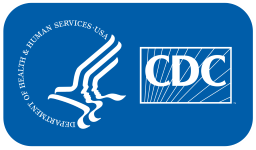COVID-19 is mainly spread through respiratory droplets. Remember to cover your coughs and sneezes, wash your hands, and stay home if you are sick. Face masks and social distancing are recommended (and in some cases required) when gathering. You should seek medical attention if you are having difficulty breathhing or have a fever of 101ºF or higher. More information can be found on the Center for Disease Control and Prevention's (CDC) website.


When we created this website, the CDC had generated several models predicting how COVID-19 could spread within the United States. Unfortunately, none of these models were available to the public. We decided to create our own models of possible spread in the United States. We hope our models helped you understand how quickly the virus might spread, how many people it might infect, and how long it might last.
Our first set of projections is for the United States and uses the Kermack-McKendrick logistic model. It is a SIR model, which stands for susceptible, infective, and recovered. This is one of the most frequently used epidemiological models.
- Susceptible: Those who could become infected
- Infective: Those who have the disease and can transmit it
- Recovered: Those who have developed immunity to the disease
The rest of our projections consist of a logistic regression curves for the rest of the world. The data we used for our logistic regression curves are the total number of confirmed cases, however experts suggest that the actual number of cases could be several times higher. This is because of the shortage of testing kits in many countries, combined with fact that a large number cases go unreported because most asymptomatic and mild cases do not require medical diagnosis or treatment. Finally, it is important to note that we could see an influx of cases in these countries as they reopen their schools and businesses.
We would like to thank the Johns Hopkins Center for Systems Science and Engineering for their meticulous collection of data and Hans Nesse for his information on the SIR model. If you have any questions or feedback, we are happy to hear it! Please feel
free to contact us at